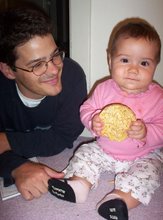For those of us who have at some time lamented the our peers' inability or unwillingness to engage in serious religious discussion, a new book is out which appears to quantify the problem. By creating a culture which is hostile to religious discourse, what we have actually suppressed is our own critical thinking. As social animals, humans require consistent, positive reinforcement in order to develop a skill or interest. Americans (and likely most other cultures) have pushed religion back to the nether-regions of our sunday-school services.
What it boils down to is this: Americans aren't doing their homework when it comes to religion. This new book appears to catalogue that phenomenon. A clip from a Washington Post review is below:
What it boils down to is this: Americans aren't doing their homework when it comes to religion. This new book appears to catalogue that phenomenon. A clip from a Washington Post review is below:
The United States is the most religious nation in the developed world Americans are also the most religiously ignorant people in the Western world. Fewer than half of us can identify Genesis as the first book of the Bible, and only one third know that Jesus delivered the Sermon on the Mount. Prothero sees America's religious illiteracy as even more dangerous than general cultural illiteracy "because religion is the most volatile constituent of culture the author combines a lively history of the rise and fall of American religious literacy with a set of proposed remedies based on his hope that "the Fall into religious ignorance is reversible." The condition Prothero describes in Religious Literacy is unquestionably one manifestation of a more general decline in the public's cultural and civic knowledge. How can citizens know what creationism means, or make an informed decision about whether it belongs in classrooms, if fewer than half can identify Genesis? |


